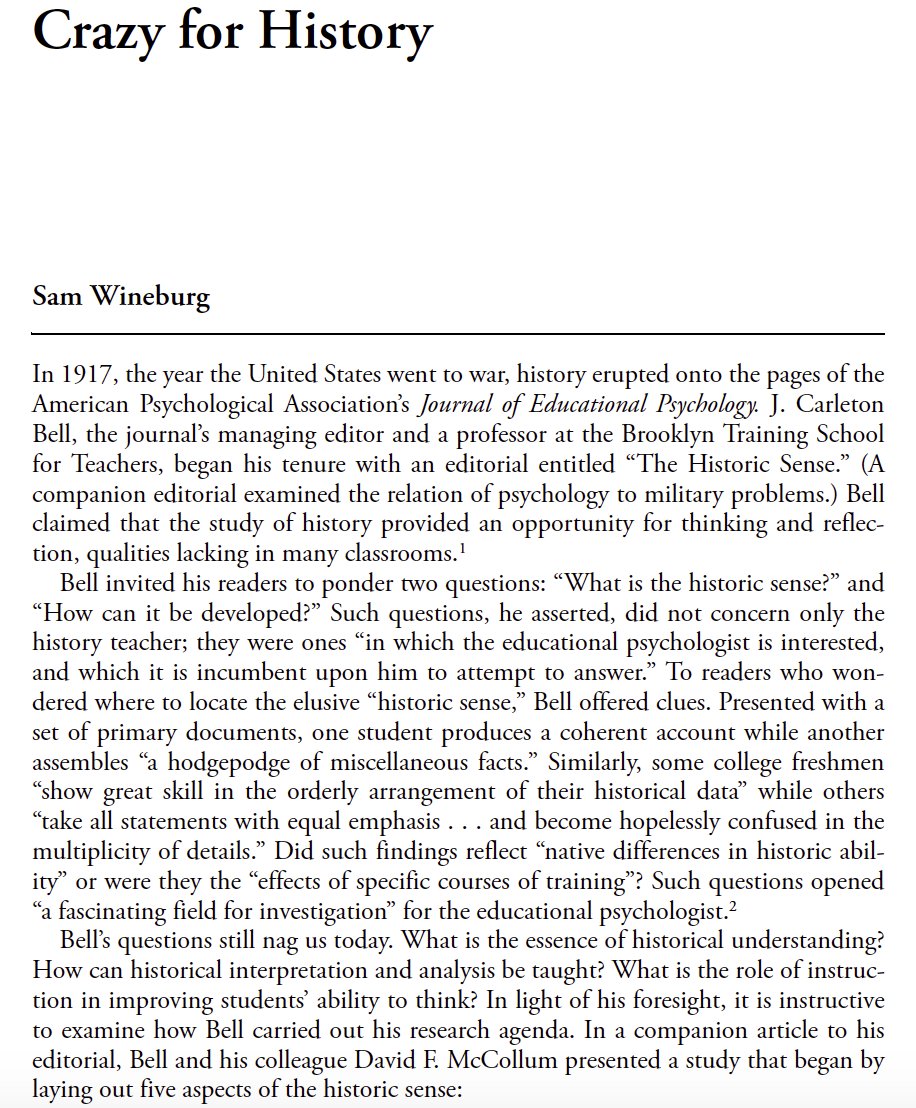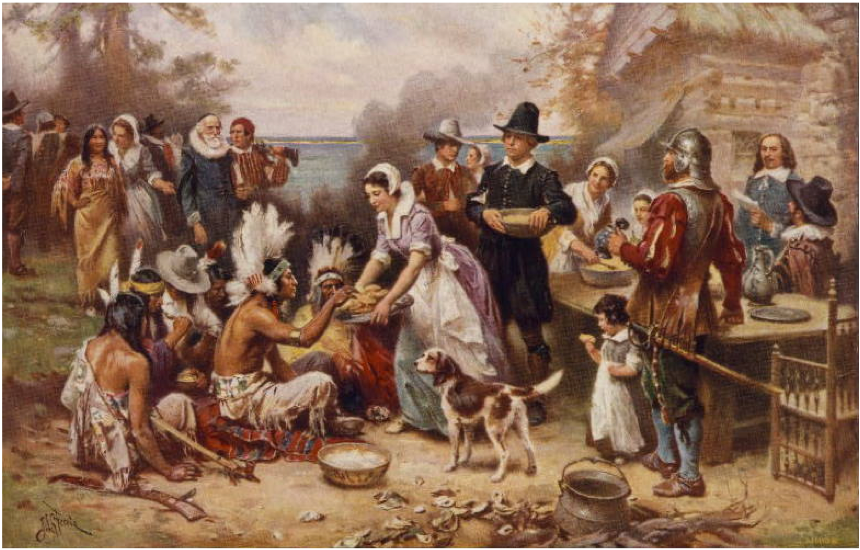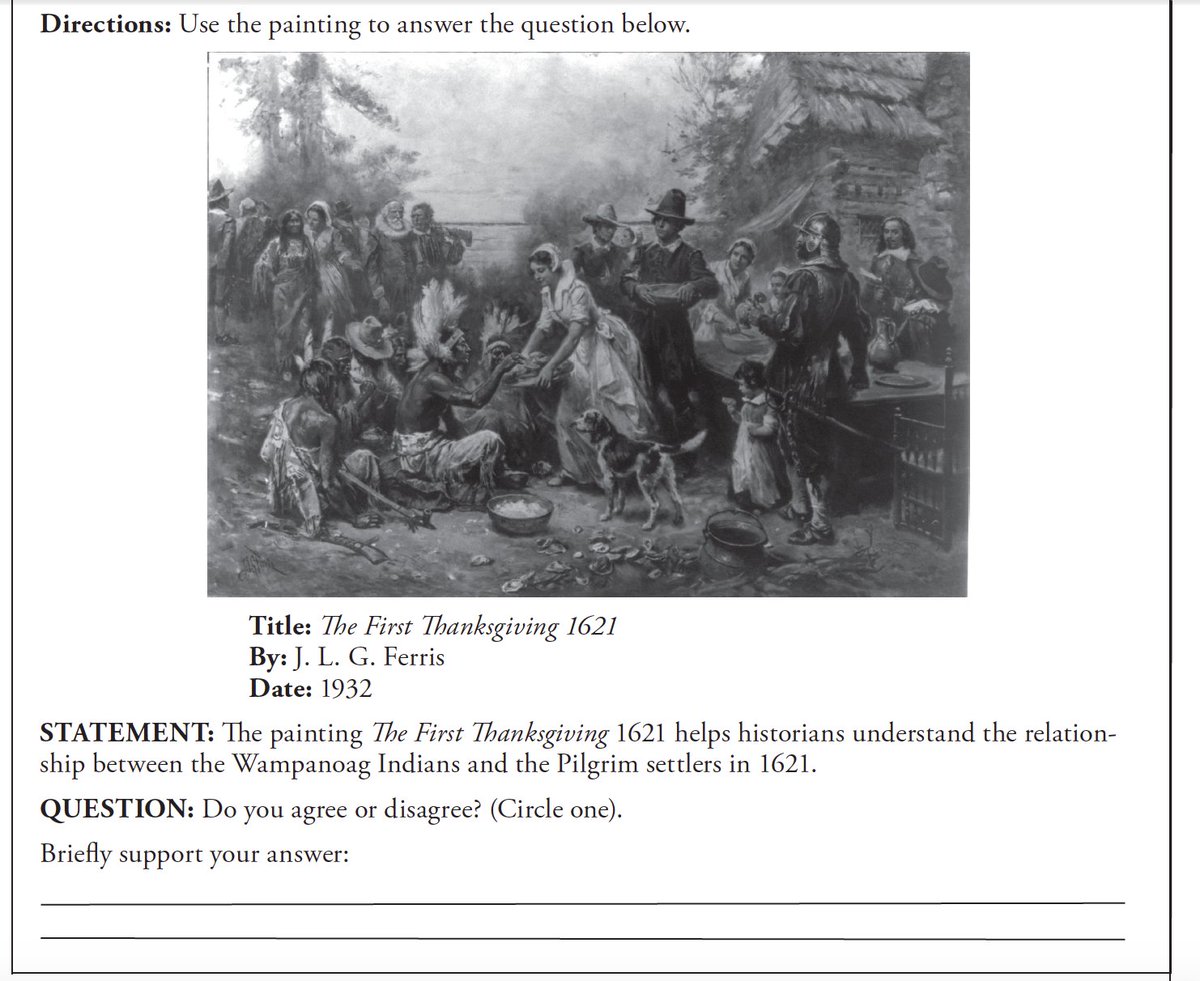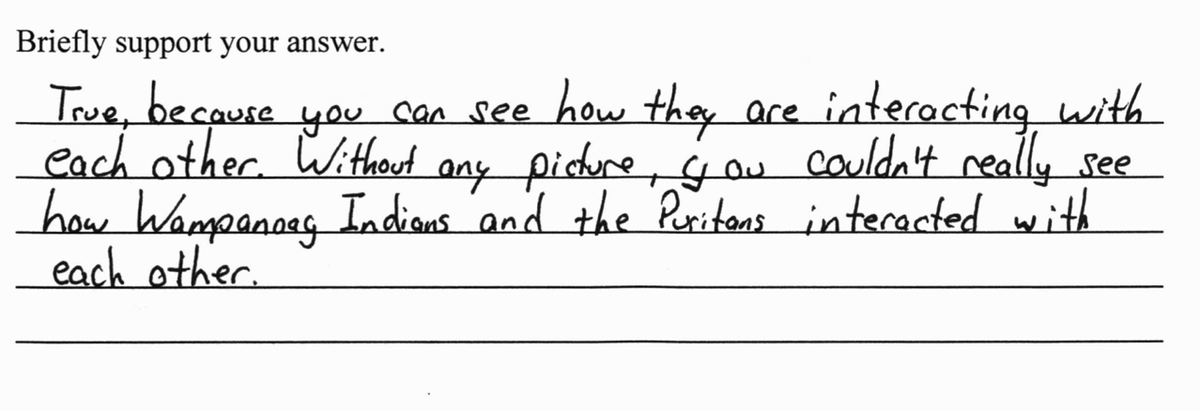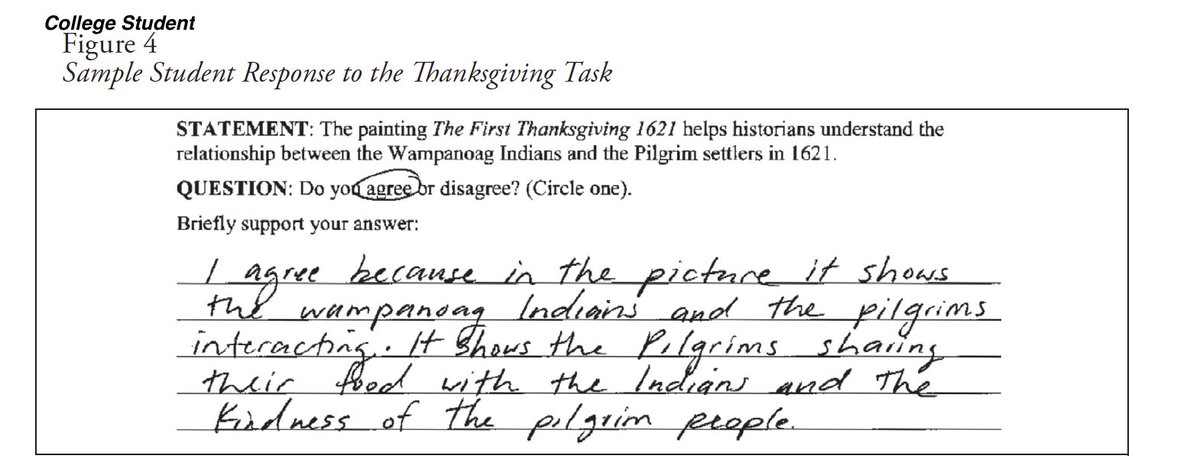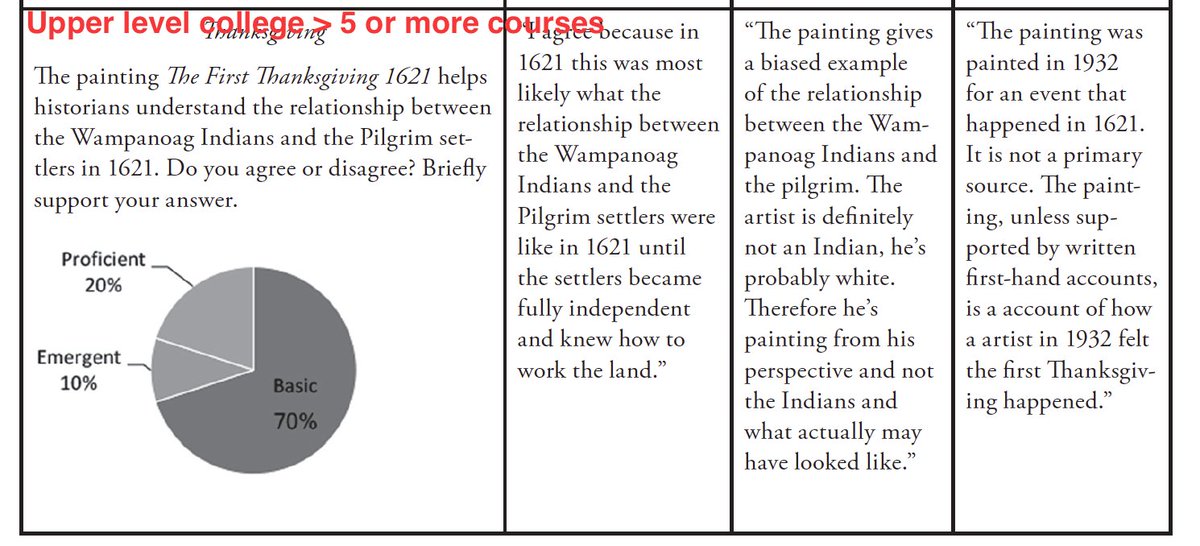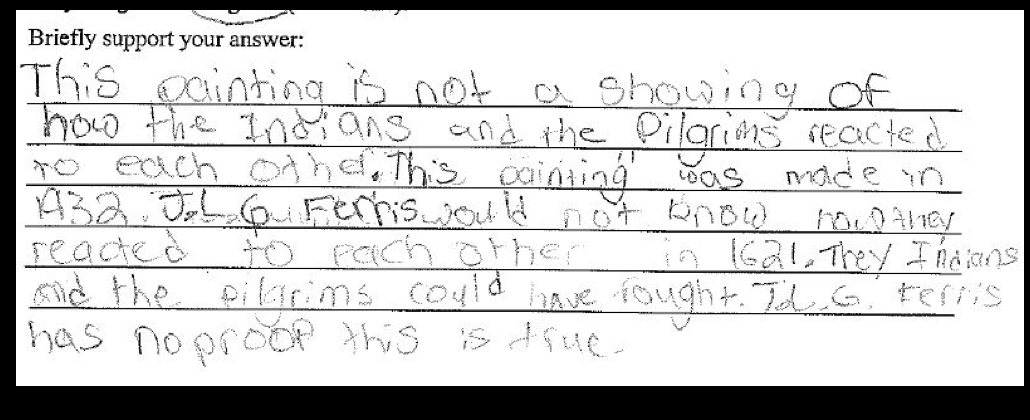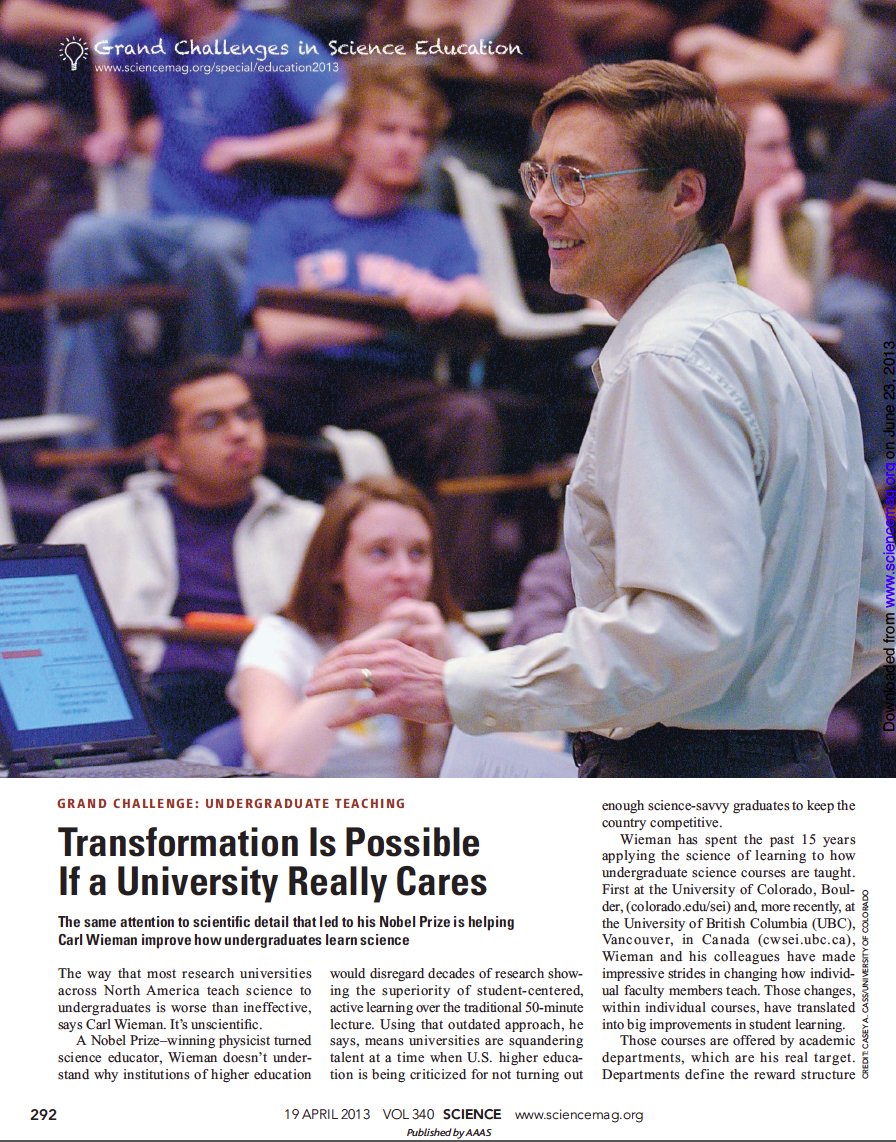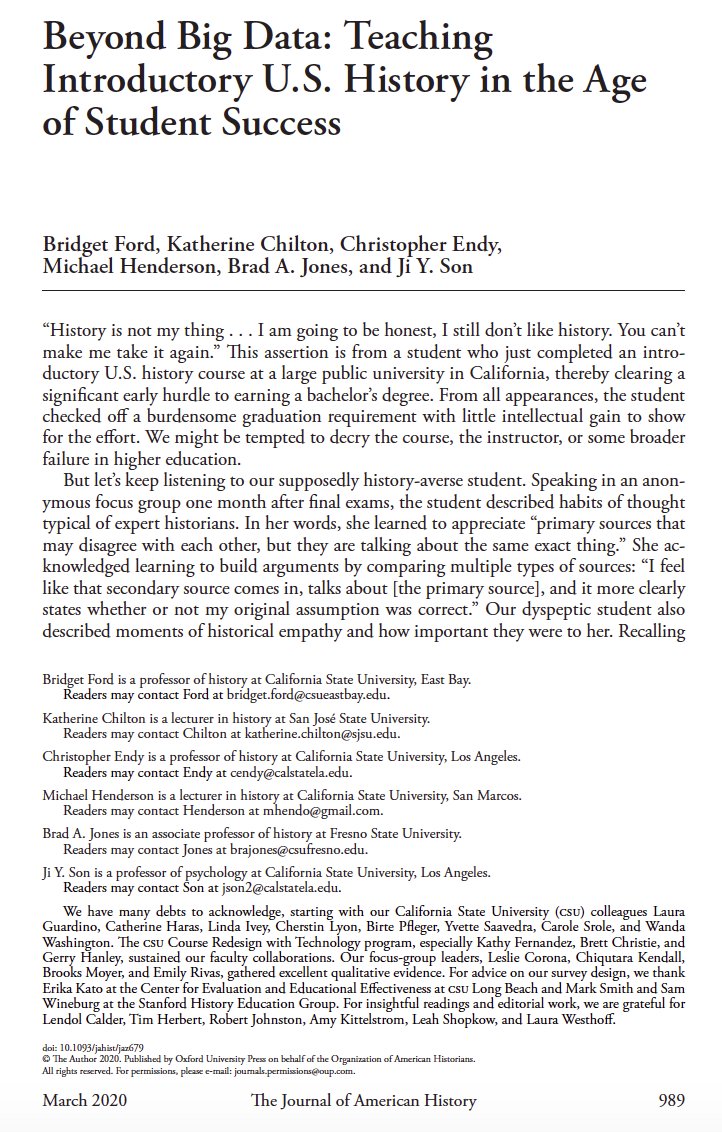History teachers, from high school to college: Worthwhile things to do in the history classroom, Episode #1.
Assessment. I know, it’s dreaded word. Bad reputation well-deserved. 1/14
Assessment. I know, it’s dreaded word. Bad reputation well-deserved. 1/14
I’ve long been a critic of multiple choice tests. Wrong answers are called “distractors.” I didn’t become a teacher to distract kids. But that’s a story for another day. (I have written about it, however) 2/
What I want to talk about here is “formative assessment” (FA) a low stakes way for teachers from high school to college to get a quick sense of where their students are at. Easily adaptable for online learning. 3/
I’ve long been concerned with what sticks with students years after they’ve forgotten what the Ming Dynasty was; or can’t recall the Diet of Worms and think it’s something that gives them horrible indigestion. 4/
Key to good formative assessment, IMHO, is that it has to be worthwhile without being onerous. You should be able to scan, oh, 35-40 student answers in ten minutes. 5/
Key word here is “scan.” Not grading, scanning. You use FA to get a better sense of where Ss are at. Their answers help YOU form your next instructional move (why it’s called formative assessment). 6/
Here’s an example we’ve used in classes from middle school to college to assess Ss understanding of sourcing. Check out the picture below, entitled "The First Thanksgiving" 7/
A simple assessment that Ss can do in a minute or two. The brief sentences they write in response will tell you far more about how they think than any blackened mark on a Scantron.8/
By far the most common response, from middle school to college, ignores the bibliographic information to focus exclusively on the image. We think of it as the "picture worth 1000 words" response. 9/
In a study we did of college students at a large public university, 70% of history students (juniors & seniors with at least 5 history courses under their belts) responded similarly https://www.insidehighered.com/views/2018/04/03/historians-need-measure-what-their-students-learn-opinion
And here's an example of a 6th-grader in a classroom that focused on historical thinking responding to the same prompt (apologies for the less-than-clear image) 12/
Sourcing is one of those things that doesn't develop spontaneously for many students. We need to model it and provide multiple examples for Ss to practice. We have loads of examples on our site, all for free 13/ https://sheg.stanford.edu/history-assessments
And especially during our current Infodemic, we want students to think hard about where ALL information comes from. Sourcing is not a "skill." It's a way of approaching the world. 14/
Postscript: @SHEG_Stanford has a ton of resources, over 160 document-based history lessons and dozens and dozens of examples of formative assessment. All of it is free. This is a tough time and we have to hang together. Stay safe and wash your hands

Can formative assessments be used effectively in the college classroom? They've helped transform intro science classes. #twitterhistorians?

 Read on Twitter
Read on Twitter